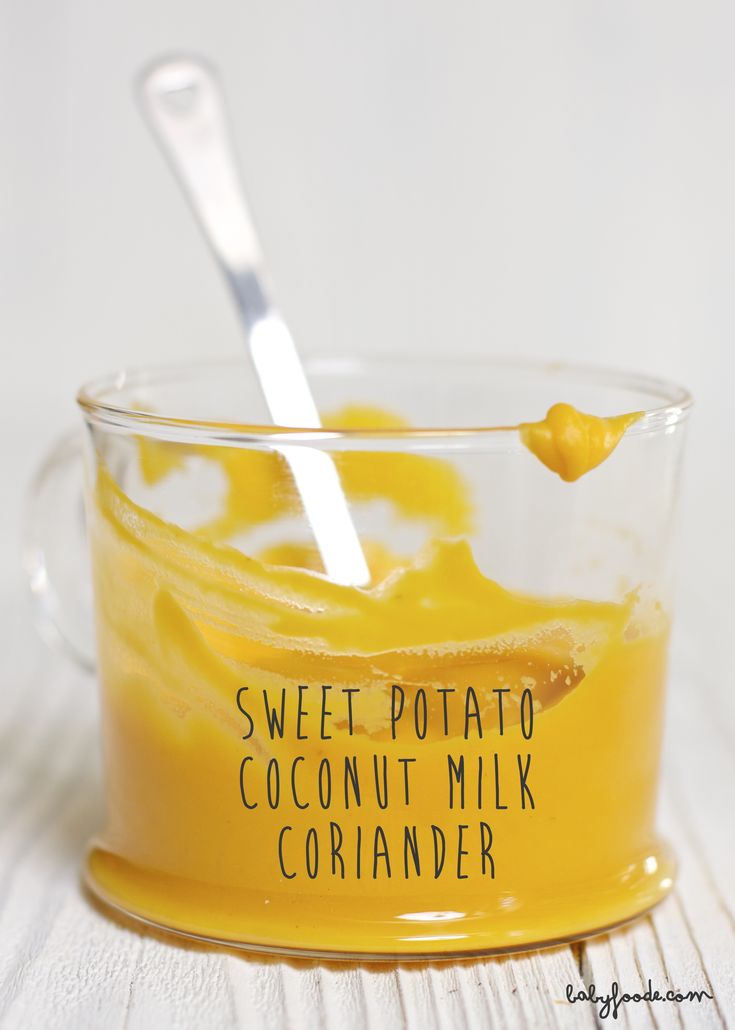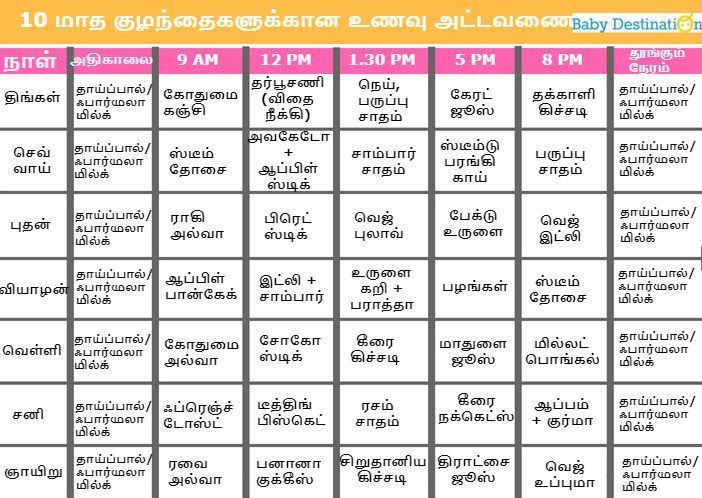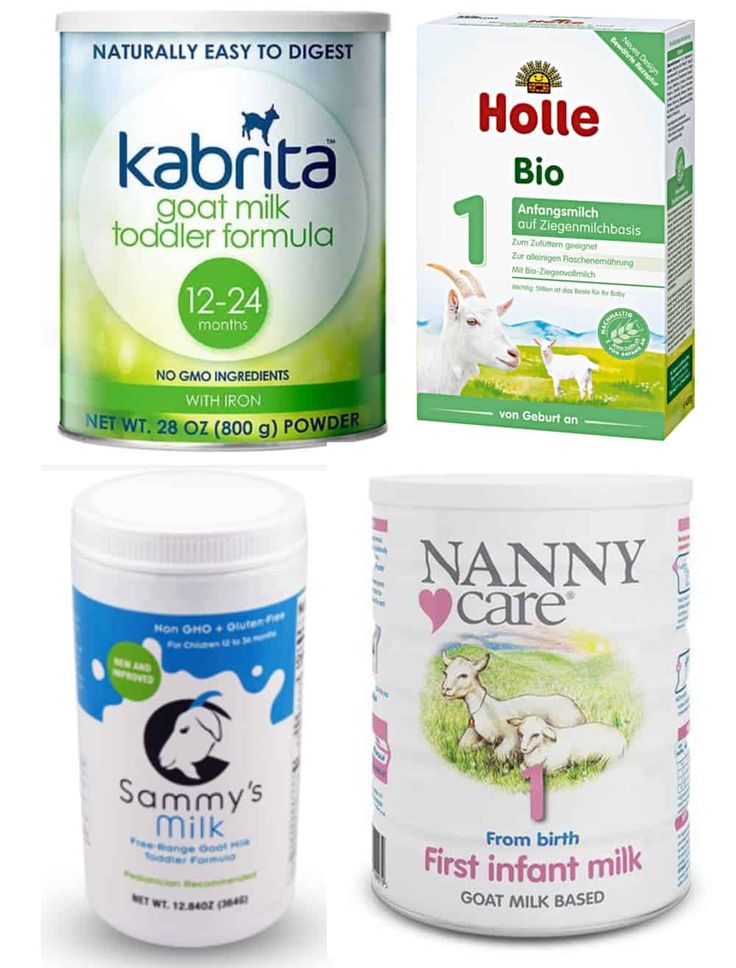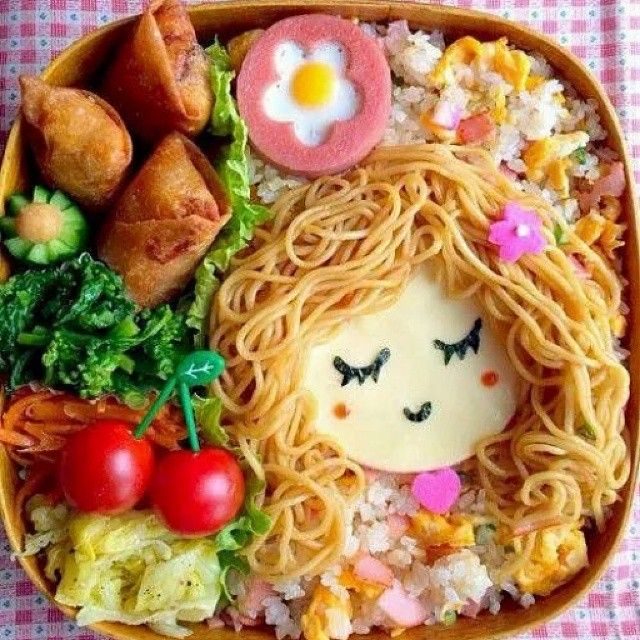Stage one baby food recipe
10 Baby Food Purees (Stage 1)
Everything you need to know about making stage 1 baby food, including 10 recipes for tasty purees that are perfect for introducing solids.
Introducing solids to your baby is such an exciting milestone but it can also be an overwhelming time with lots of questions. When is your baby ready for solids? Which foods should you start with? And how do you make homemade baby food?
I’m here to make sure you have all the information you need! Plus sharing 10 baby food purees to give you some ideas of where to start if you’ve decided to make your own baby food.
When To Start Solids
Most pediatricians recommend babies start solids between 4-6 months, but you know your baby best so trust your gut and do what feels right to you (with guidance from your pediatrician)!
I have a great guide for introducing solids to babies where I outline the basics and share my approach, but just to recap, here are some signs that your baby is ready to start enjoying solid food:
- Baby can hold their head up in an upright position without too much bobbing
- Baby can sit up with (or without) support
- Baby has lost the tongue thrust reflex
- Baby puts their hands or toys in their mouth
- Baby has shown interest in food such as leaning forward and opening their mouth or trying to grab food you’re eating
How to Introduce Solid Food to Baby
Once you’ve decided that your baby is ready to start solids, it’s go-time. There are different approaches to this including baby led weaning, where you skip purees all-together and let your baby feed themselves with finger foods from the start and traditional weaning, which starts with pureed (or blended) foods.
With Olivia I did a hybrid approach where the first few foods we introduced where purees and then we started with a few finger foods when she seemed ready. I go into more detail on this in my introducing solids post.
To be honest, if you’re planning to do baby led weaning this post probably won’t be that helpful because it’s focused on how to make a variety of single ingredient purees.
What is Stage 1 Baby Food?
If you decide to use purees, you’ll quickly notice that baby food is labeled by three stages. Here is a breakdown of what these different stages mean:
- Stage 1 (4-6 months) – single ingredient foods that are pureed into a very thin consistency with no chunkiness whatsoever that can be served with a spoon.

- Stage 2 (around 6-8 months) – slightly thicker consistency and typically includes food combinations and the addition of spices like cinnamon, nutmeg, turmeric, mint, basil, etc. See my stage 2 baby food combos.
- Stage 3 (around 9-12 months) – thick blended foods with chewable chunks or small cut up pieces of easily chewed food.
Best First Foods for Baby
Solid foods can be introduced in any order, but most pediatricians recommend starting with a single-ingredient food that is easy to digest like pureed sweet potato, carrot, banana and/or avocado. Other options include pureed meats, poultry, beans and iron-fortified baby cereals like rice cereal or oatmeal.
You just want to be sure the first few foods are pureed super smooth and almost a liquid consistency. You can easily thin purees with breastmilk or formula.
As baby gets more practice with eating you can reduce the amount of liquid and offer purees with a thicker texture.
Food Allergies and Known Allergens
When introducing foods it can be helpful to introduce only one food every three to five days so you can watch for any signs of allergic reactions. A reaction could show up almost immediately or a few days after so it’s recommend to introduce one food at a time when starting out so you can track what may be causing a reaction in your baby. Reactions include: hives or rashes, itching, shortness or breath or more serious reactions like vomiting or swelling of the lips and tongue.
It’s also helpful to be mindful about common allergens. Foods like diary, eggs, peanuts, tree nuts, wheat, soy and shellfish should be introduced gradually after less allergenic foods have been tolerated. The previous recommendation was to wait on these foods, but that as since changed and in fact, delaying the introduction of these foods may increase the risk of a child developing allergies.
One food that is off limits until a baby is at least 1 year old is honey because of the risk of infantile botulism.
How to Make Homemade Baby Food
We covered when and what foods to start with. Now lets talk how to make a basic baby food puree! Don’t fret, it’s super easy. Here’s the basic process:
- Prep: you’ll want to start by ensuring your fruit or vegetable of choice is thoroughly cleaned. Even if you’re using organic fruits and vegetables, you’ll want to washed and dry your produce! Once the produce is clean, you’re ready to peel and chop into chunks. You can skip this step for some fruits or veggies.
- Cook: some foods like banana and avocado don’t need to be cooked, but many do. For cooking, you can steam, boil or roast. I recommend using a fork to test that they’re tender and soft.
- Blend: place cooked food into a blender or food processor and blend until smooth (or the consistency you desire), adding liquid (breast milk, formula or water) as needed.
That’s it! You’ve just made a homemade baby food puree!
Best Tools For Making Homemade Baby Food
You really don’t need any fancy kitchen appliances, but there are a few tools that will come in handy when making homemade baby food.
- Steamer basket – Steaming is one the easiest ways to cook foods for making purees and having a steamer basket is key. I have a really basic steamer basket that fits in most pots, but I also use the steamer basket that comes with my Always Pan.
- Blender – I’ve been using my Vitamix blender and love how smooth it makes the purees. You can also use a food processor or an immersion blender.
- Silicone ice cube trays – In the beginning I really liked to make large batches of pureed food and pour it into a silicone ice cube tray with a lid to freeze for later. It was perfect when babies aren’t eating big portions because each cube is about 1-2 ounces.
- Freezer bags – Once you have frozen cubes of puree you can transfer them to a freezer-safe bag. I love reusable Stasher bags for this.
- Storage containers – As soon as you start making homemade baby food you realize that you need lots of little containers.
 A friend loaned me a bunch of plastic storage containers for keeping homemade baby food and I also invested in these glass containers that are freezer safe.
A friend loaned me a bunch of plastic storage containers for keeping homemade baby food and I also invested in these glass containers that are freezer safe. - Permanent markers – When storing and freezing baby food you’ll want to label everything with the name of the food and the date.
- Baby food maker – if you’re looking for an all-in-one solution that steams food and blends it there are some cool gadgets (like the BEABA Babycook) that make homemade baby food a breeze!
10 Stage One Baby Food Purees
Ready to get started making some stage 1 baby food purees? Here are 10 easy recipes to get you started. These are the purees I used in the early days with Olivia. She loved all of these, but there are a ton of other purees you can try including pear puree, apple puree (aka applesauce), bean purees (like chickpea or lentil puree) and even chicken puree.
Sweet Potato
Sweet potatoes are a powerhouse vegetable! They’re packed with fiber, vitamins, minerals and antioxidants and babies love their sweet flavor.
Sweet Potato Puree
4.10 from 10 votes
Sweet potato puree is so easy to make. Just bake your sweet potatoes, peel and blend until smooth! It's a great first food for babies, but can also be used in baking recipes, mixed into oatmeal, added to smoothies or served as a side dish.
Get Recipe
Carrot
Carrots are low on the allergy scale and easily digested by a tiny tummy. They are high in beta-carotene, an antioxidant that converts to vitamin A in the body, which is crucial for eye health and overall immune function.
Carrot Puree
4.08 from 42 votes
How to make carrot baby food by cooking and blending carrots into a smooth and creamy puree. Carrot puree make a great stage 1 starter food for babies.
Get Recipe
Avocado
Avocados are high in heart-healthy fats as well as fiber, vitamins, minerals and antioxidants! They’re incredibly nutritious and super easy to prepare.
Avocado Puree
5 from 3 votes
Avocado is great first food for babies. It contains healthy fats, it’s easy to blend and it’s delicious. Make it in your food processor or blender or simply mash!
Get Recipe
Banana
A great first food to introduce to babies, bananas are naturally soft and mushy, easy to digest and loaded with vitamins and minerals. The best part? You don’t need to cook them!
Banana Puree
5 from 2 votes
Fresh banana puree is a great first food and baby will love it because it tastes sweet! Easily make it by mashing or blending ripe bananas.
Get Recipe
Peas
Peas are naturally sweet and pack a punch with nutrition, containing a variety of vitamins, minerals and antioxidants. They are also high in protein, with 4 grams per half-cup serving. Fun fact, peas are actually a legume!
Pea Puree
5 from 5 votes
Pea puree is a great first food when introducing solids to babies and all you need is a bag of frozen peas and a blender or food processor!
Get Recipe
Butternut Squash
Technically a fruit, butternut squash is packed with fiber, vitamins and minerals.
Butternut Squash Puree
Make butternut squash puree at home with this simple recipe! Just scoop the seeds, roast, blend and use in recipes that call for butternut squash puree. It's also a great first food for babies!
Get Recipe
Peach
Peaches are naturally sweet and perfect for introducing baby to solid foods. They are rich in many vitamins, minerals and antioxidants.
Peach Puree
5 from 4 votes
Peach puree is so easy to make using fresh peaches! It's a great first food for babies, but can also be used as a topping or mix-in for breakfast, dessert and drink recipes.
Get Recipe
Mango
Rich in vitamins, minerals and antioxidants, mango is especially high in vitamins A and C. They also contain a group of digestive enzymes called amylases which help little tummies just starting with solid foods.
Mango Puree
5 from 3 votes
How to make a delicious mango puree out of fresh (or frozen) mango.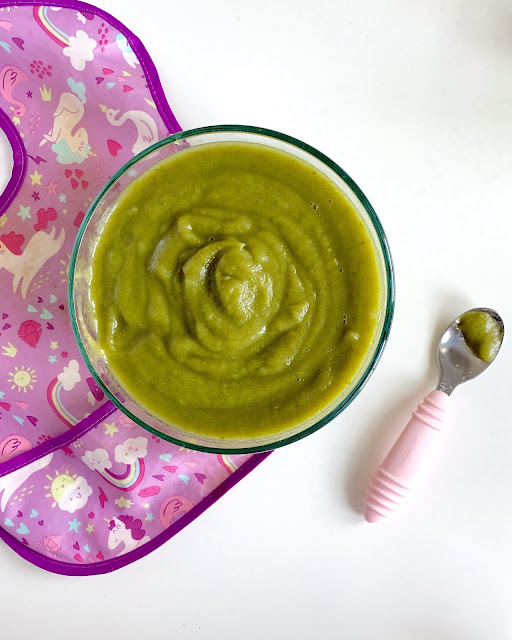 It's perfect for serving to baby or to use in recipes.
It's perfect for serving to baby or to use in recipes.
Get Recipe
Blueberry
Small but mighty! Blueberries are known as a superfood. Superfoods are usually plant-based and rich in nutrients that are beneficial to your health such as vitamins, minerals, healthy fats and fiber.
Blueberry Puree
5 from 2 votes
Blueberry puree is full of antioxidants and vitamins and makes for a quick and easy first food for baby! It can also be used as a topping or mix-in for breakfast, dessert and drink recipes.
Get Recipe
Strawberry
Strawberries pack quite a health punch! They are low calorie, taste delicious and are a great source of vitamins, minerals and plant compounds.
Strawberry Puree
5 from 2 votes
Strawberry puree is easy to make and naturally sweet with no added sugar! Use it in baked goods, drinks or as baby food.
Get Recipe
How to Store Purees
Freshly pureed baby food should be stored in the fridge and used within 3-4 days.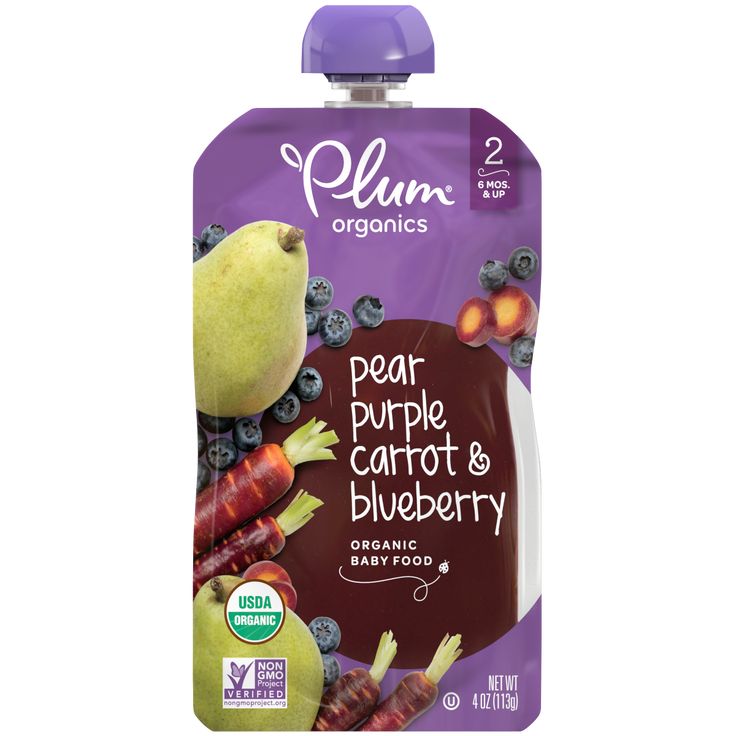 For longer storage, I recommend freezing purees in an airtight container. I like using silicone ice cube tray or freezer safe jars because they make it easier to thaw smaller amounts for serving to babies.
For longer storage, I recommend freezing purees in an airtight container. I like using silicone ice cube tray or freezer safe jars because they make it easier to thaw smaller amounts for serving to babies.
How to Thaw Frozen Puree
I recommend thawing frozen purees in the fridge the night before you want to use them. In a pinch, you can also thaw it quickly with a warm water bath. It thaws quickly if you’re defrosting a small amount to serve to a baby.
FAQ
Can I store homemade baby food purees?
Yes! Making large batches of purees and storing them in the refrigerator or freezer makes feeding baby homemade purees a breeze.
Can you freeze homemade purees?
Freezing baby food that has been made with frozen fruit or vegetables is fine, as long as you have cooked the frozen foods first. Do not refreeze foods that have thawed without cooking. I recommend labeling baby food with the ingredient and date before you place them in the freezer.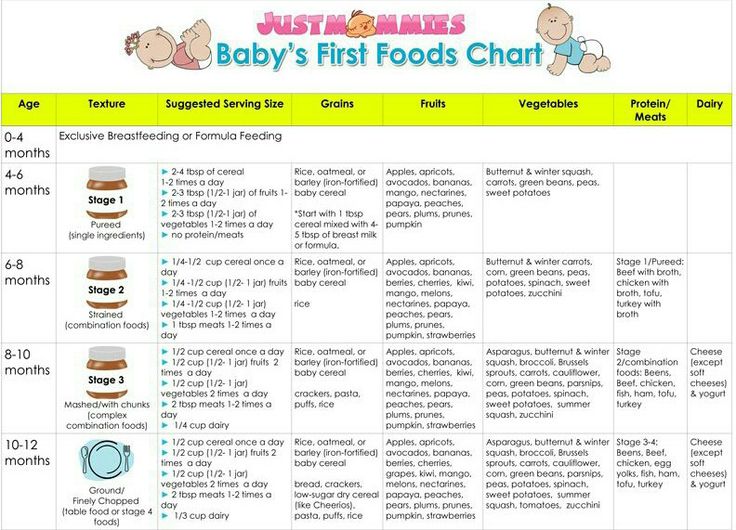
Can you freeze baby food made with breast milk or formula?
If you are freezing baby food that has been mixed with fresh breast milk you’re fine! However, you should not freeze baby food that has been mixed with previously frozen breast milk. Once frozen breast milk has been thawed, it should never be re-frozen.
If you are using formula, it should be okay to freeze baby food that has been mixed with it. Most formula companies don’t recommend freezing formula, but you’re using such a small amount.
You can also freeze the baby food purees without adding any liquid. You can then thaw the baby food puree in the fridge overnight and then thin the food to the desired consistency with breast milk or formula right before serving.
This post about freezing baby food has a ton of great insight and tips.
Should I use organic fruits and vegetables?
I recommend using organic produce when possible, though I realize this isn’t always in the budget. Either way thoroughly rinsing your fruits and vegetables is an important step whether they’re organic or not.
Either way thoroughly rinsing your fruits and vegetables is an important step whether they’re organic or not.
This list of the dirty dozen fruits and vegetables from the EWG is a good guide if you can only budget for some but not all organic produce.
Is it safe to thin baby food with cow’s milk?
From a nutritional point of view, most doctors recommend waiting to introduce babies to cow’s milk until one year of age. If you need to thin your puree you can use breast milk, formula or plain water.
What is the difference between stage 1 and stage 2 baby food?
Stage 1 purees are very thin with no chunkiness and are single ingredients. Stage 2 baby foods can be more elaborate with food combinations as well as chunkier textures.
More Recipes for Resources
- Baby Pancakes
- How to Make Oatmeal For Babies
- Baby (+ Toddler) French Toast
- Applesauce
- Baby Yogurt Melts
- 6 Baby Food Combinations (Stage 2)
Be sure to check out all of the baby food recipes here on EBF.
10 Stage One Baby Food Purees
5 from 5 votes
Everything you need to know about making stage 1 baby food, including 10 recipes for tasty purees that are perfect for introducing solids.
Print Recipe Pin Recipe
Prep Time 10 minutes
Cook Time 20 minutes
Total Time 30 minutes
Servings 6
Sweet Potato
- 2 cups steamed and peeled sweet potatoes
- water, breast milk or formula to thin
Carrot
- 1 lb steamed and peeled carrots
- water, breast milk or formula to thin
Avocado
- 1 avocado
- water, breast milk or formula to thin
Banana
- 1 banana
- water, breast milk or formula to thin
Pea
- 2 cups cooked peas
- water, breast milk or formula to thin
Butternut Squash
- 2 cups steamed and peeled butternut squash
- water, breast milk or formula to thin
Peach
- 3 ripe peaches
- water, breast milk or formula to thin
Mango
- 2 ripe mangoes
- water, breast milk or formula to thin
Blueberry
- 2 cups blueberries
- ½ cup water
Strawberry
- 2 cups strawberries
- water, breast milk or formula to thin
Add veggies or fruit into a high powered blender or a food processor.
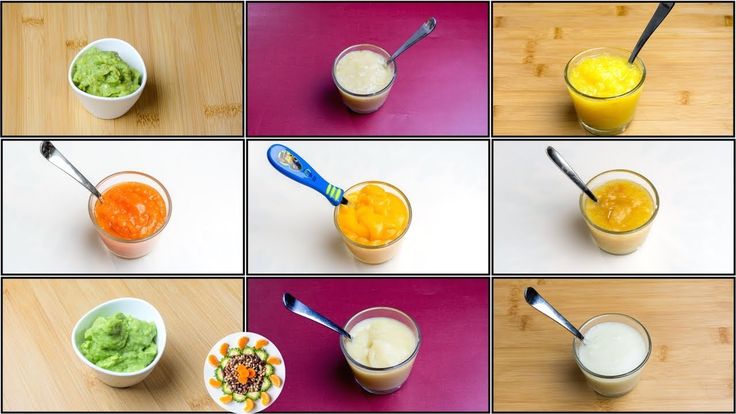 Blend and add liquid until you reach the consistency you desire. You can make the purees smooth and thin for young babies or thicker and chunkier for older babies.
Blend and add liquid until you reach the consistency you desire. You can make the purees smooth and thin for young babies or thicker and chunkier for older babies.
blender
food processor
Serving: 1sweet potato Calories: 75kcal Carbohydrates: 17g Protein: 1g Sodium: 48mg Potassium: 292mg Fiber: 3g Sugar: 4g
DID YOU MAKE THIS RECIPE?
Please leave a comment and star rating on this post and share on social media using the hashtag #eatingbirdfood. I love seeing your recipe shares!Sweet Potato Puree {For Babies or Recipes}
Sweet potato puree is so easy to make. Just bake your sweet potatoes, peel and blend until smooth! It’s a great first food for babies, but can also be used in baking recipes, mixed into oatmeal, added to smoothies or served as a side dish.
I’ve been on a kick of making my own fruit and veggie purees! It all begin when I started making baby food for Olivia, but it’s definitely come in handy when local grocery stores are sold out thanks to all of the seasonal baking and holiday madness.
While it’s definitely easier to pick up a can of puree at the store, I think people overestimate how hard it is to make your own puree at home. This recipe is so simple and hands off… anyone can do it. Promise!
So today, I’m teaching you how to make an easy sweet potato puree that you can use in so many ways! First let’s chat about sweet potatoes and why they are one of my favorite vegetables.
Sweet Potato Nutrients
Sweet potatoes are a powerhouse vegetable! They’re packed with fiber, vitamins and minerals. They’re also high in antioxidants which help protect your body against free radical damage.
Studies have shown sweet potatoes positively impact gut, brain, eye and immune health. And some studies have shown that certain antioxidants in sweet potatoes may protect against certain cancers. Bottom line? They’re SO good for you and delicious! Now you have no excuses to not incorporate them into your diet. (Source)
Buying & Storing Sweet Potatoes
When shopping for sweet potatoes, look for firm, unwrinkled skins. Sweet potatoes come in all different colors – creamy white, deep orange and purple. I usually buy Beauregard, Jewel or Garnet sweet potatoes just because those varieties are typically available at my local grocery stores. That said, Beauregard sweet potatoes tend to be stringier so when given the option I go for Jewel or Garnet.
Sweet potatoes come in all different colors – creamy white, deep orange and purple. I usually buy Beauregard, Jewel or Garnet sweet potatoes just because those varieties are typically available at my local grocery stores. That said, Beauregard sweet potatoes tend to be stringier so when given the option I go for Jewel or Garnet.
How to Cook Sweet Potatoes for Puree
The first step to making sweet potato puree is cooking the sweet potatoes. I have cracked the code to making perfect baked sweet potatoes so that’s the method I tend to use, but you can also steam or boil them.
BakeStart by washing your sweet potatoes well. Use a fork to poke several holes in each potato – I usually poke 4 times for each potato! Place the potatoes directly on a baking sheet and bake at 400ºF for 60 minutes. Some people like to wrap their potatoes in aluminum foil but that actually steams the potato so just pop them right in the oven! You’ll know the potatoes are ready when they’re a little wrinkly and can easily be pierced with a fork.
I’ve used this method for making pureed sweet potatoes for Olivia. It’s a bit faster since you’re chopping the sweet potatoes into small chunks. To steam, simply peel the sweet potato, cut into cubes, about 1 inch in size and steam. Add about 1-2 inches of water to pot, place the steamer basket in and add sweet potato cubes. Boil water, cover and let the sweet potatoes steam until soft.
BoilBoiling is another quick option. Simply peel the sweet potato and cut into cubes, about 1 inch in size. Bring a pot of water to a boil and add sweet potato chunks. Reduce to a simmer and cook until tender, around 15 minutes.
How to Puree Sweet Potatoes
After your sweet potatoes are fully cooked, remove them from the oven and set them aside to cool. Once you can hold them without burning yourself, use your hands to peel the skin away from the flesh, if you haven’t peeled them already. You can toss the skin or snack on it if you want – it’s loaded with nutrients!
When it comes to pureeing the sweet potatoes I usually use my food processor or Vitamix blender, but you can also use an immersion blender, potato masher or even a fork.
Food processor – Add the cooked potatoes to your food processor and blend until smooth.
Blender – Add the cooked potatoes to a high-powered blender and blend until smooth.
Immersion blender – Add the cooked potatoes to a large bowl or pot and blend until smooth.
Masher – Add the cooked potatoes to a large bowl or pot and use a potato masher (or fork) to mash the potato. This will result in a chunkier puree and is a great option when serving to older babies.
How to Use Sweet Potato Puree
- Plain sweet potato puree is a great first food for babies. For more advanced eaters you can combine the sweet potato puree with another puree or even add it to yogurt or oatmeal. Check out more combo ideas for baby below!
- Make a simple side dish by mixing in butter, salt and pepper and any fresh or dried herbs you’d like! You could also play off of the sweetness and make a coconut oil, cinnamon and salt version… yum!
- Mix it into these delicious sweet potato brownie bites, sweet potato brownies, sweet potato breakfast cookies or sweet potato baked oatmeal.

- Use in quick breads or muffins in place of applesauce or pumpkin puree. This helps keep the oil/fat content down while still making a perfectly light and fluffy baked good.
- Add it to a smoothie for some added fiber and flavor. I think it would be delicious in place of the pumpkin puree in this pumpkin pie smoothie!
- Add to oatmeal for extra color, flavor and creaminess!
- Mix with creamy hummus for extra flavor and nutrients… plus it will make it a beautiful orange color!
- Mix it into pancakes or waffles – follow this recipe for pumpkin pancakes but swap the pumpkin puree for sweet potato puree!
Tip! If you're serving this sweet potato puree to a baby, you can thin it out a little by adding a splash of milk (regular or breast milk works great!).
Sweet Potato Puree for Babies
When you start solids with your child, sweet potato puree is a great first food. It was Olivia’s first food! I just mixed it with breast milk so it was super thin.
It’s obviously delicious on it’s own, but can be combined with a variety of other foods for stage 2 and beyond. I love the combo of sweet potato and apple that I shared in my baby food combinations post.
Foods That Will Pair Well with Sweet Potato Puree- Green veggies – kale, spinach, avocado, peas
- Orange veggies – pumpkin, butternut squash, carrot
- White veggies – cauliflower
- Fruits – mango, pear, banana, apples, banana
- Dairy – yogurt, cottage cheese, ricotta cheese
- Grains – quinoa, oats, brown rice
- Meat – chicken, beef
- Seasonings and spices – curry, ginger, nutmeg, cinnamon
- Apple, cinnamon and sweet potato
- Sweet potato, carrot, apple and banana
- Broccoli, sweet potato and butternut squash
- Black bean, sweet potato and cumin
- Sweet potato and spinach
- Sweet potato and beets
Fresh sweet potato baby food should be stored in the fridge and used within 3 days. For longer storage, I recommend freezing the sweet potato puree! I like using silicone ice cube trays and these 4 oz glass storage containers. The ice cube trays are great for younger babies who aren’t eating as much volume because you can defrost one cube at a time. While the 4 oz jars are great for older babies who are eating more than 1 oz at a time.
For longer storage, I recommend freezing the sweet potato puree! I like using silicone ice cube trays and these 4 oz glass storage containers. The ice cube trays are great for younger babies who aren’t eating as much volume because you can defrost one cube at a time. While the 4 oz jars are great for older babies who are eating more than 1 oz at a time.
I recommend thawing frozen sweet potato puree in the fridge the night before you want to use it, but you can also thaw it quickly with a warm water bath. It thaws quickly if you’re defrosting a small amount to serve to a baby.
More Puree Recipes to Try
- Butternut Squash Puree
- Peach Puree
- Carrot Puree
- Banana Puree
- Pumpkin Puree
- Applesauce
- Strawberry Chia Jam
- Strawberry Puree
- Blueberry Puree
- 6 Baby Food Recipes
The Most Popular Sweet Potato Recipes
- Sweet Potato Bites
- Roasted Sweet Potato Kale Frittata
- Sweet Potato Casserole
- Sweet Potato Soup
- Baked Sweet Potato Chips
- Sweet Potato Pie
- Dessert Baked Sweet Potato
- Sweet Potato Cupcakes
Sweet Potato Puree
4 from 10 votes
Sweet potato puree is so easy to make. Just bake your sweet potatoes, peel and blend until smooth! It's a great first food for babies, but can also be used in baking recipes, mixed into oatmeal, added to smoothies or served as a side dish.
Just bake your sweet potatoes, peel and blend until smooth! It's a great first food for babies, but can also be used in baking recipes, mixed into oatmeal, added to smoothies or served as a side dish.
Print Recipe Pin Recipe
Prep Time 5 minutes
Cook Time 1 hour
Total Time 1 hour 5 minutes
Servings 3 cups
- 2 sweet potatoes
Preheat oven to 400°F. Wash sweet potatoes and poke holes with a fork (about 4 for each potato). Place potatoes on a baking sheet and place in the center of the oven.
Bake for about 60 minutes or until the sweet potatoes are a bit wrinkly and fork tender.
Remove from oven and let cool. Once cool enough to handle, use your hands to peel the skin away from the flesh. Discard the skin (or snack on it).
Add potato flesh to your food processor and blend until smooth.

Use in recipes that call for sweet potato puree, serve as baby food or add seasonings to make a delicious side dish.
food processor
Serving: 1cup Calories: 75kcal Carbohydrates: 17g Protein: 1g Sodium: 48mg Potassium: 292mg Fiber: 3g Sugar: 4g
DID YOU MAKE THIS RECIPE?
Please leave a comment and star rating on this post and share on social media using the hashtag #eatingbirdfood. I love seeing your recipe shares!Children's recipe - Encyclopedia Baby food
Victoria Levchuk©What is a children's recipe? I wonder how a children's recipe differs from an adult? A children's recipe is prepared for a baby, up to what age? How to adapt adult table dishes to children's recipes? We will try to answer these questions and even more. First, let's figure out what a recipe and a children's recipe are!
What is a prescription?
Table of contents:
Recipe is a set of instructions or a description of how to prepare a culinary dish.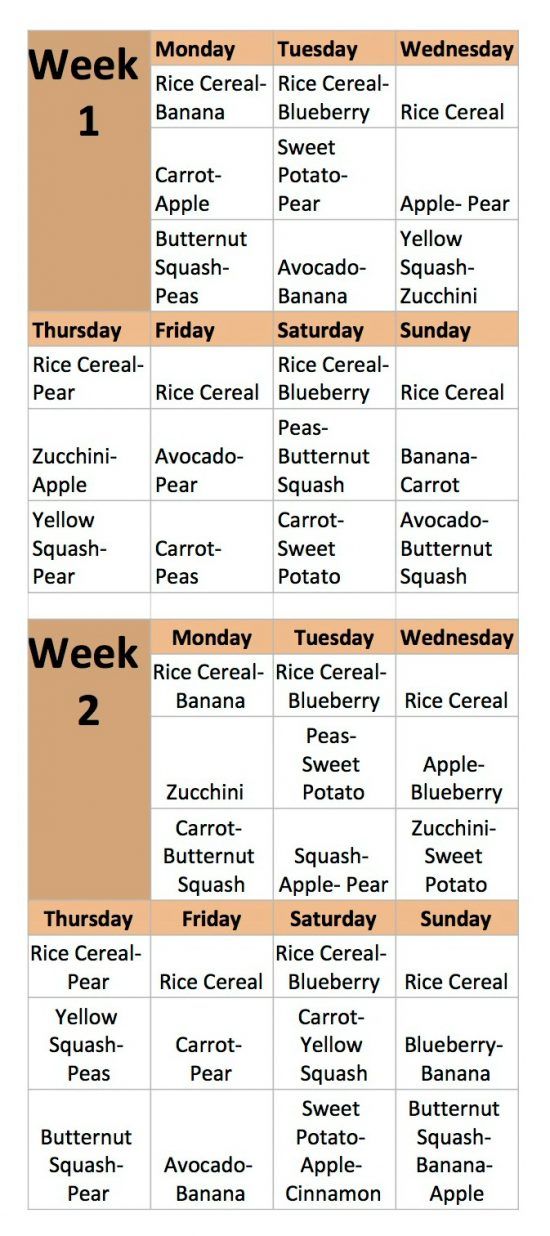 The word is also used in medicine or information technology. A doctor usually writes a prescription for medicines that can be obtained or bought at a pharmacy.
The word is also used in medicine or information technology. A doctor usually writes a prescription for medicines that can be obtained or bought at a pharmacy.
Prescription was originally a medical word. The recipe comes from the Latin "recipere" which means "to take". The word was first used in the 14th century as a verb rather than a noun. Only in the 16th century did the recipe become a noun and signify the recipe itself. Around the 17th century, the word recipe migrated from a medical topic to cooking and began to denote a method / instruction for preparing a dish.
The recipe consists of two main parts: the list of ingredients and the method of preparation. There are different styles of writing recipes, such as the drawn recipe. Ingredients are preceded by the name, number of servings, and serving size, if applicable. Then a list of ingredients and cooking method.
If the recipes are taken from some source and adapted, then you must indicate the source under the text of the recipe. Recipes need to be cooked before they are posted to make sure they work, the ingredients and serving sizes are right, and the food tastes amazing. If cooking is a flight of thought and inspiration, then you definitely need to take notes.
Recipes need to be cooked before they are posted to make sure they work, the ingredients and serving sizes are right, and the food tastes amazing. If cooking is a flight of thought and inspiration, then you definitely need to take notes.
As a minimum, the prescription must contain the following information :
- name of the dish
- list of ingredients with the exact amount of each ingredient
- description of how the dish should be prepared and finished, this is called the cooking method
- Number of servings and cooking time.
Children's recipe is a way of preparing a dish, taking into account the characteristics of the child's age. Therefore, baby food is divided into age stages: 4-6 months, 7-8 months, 8-10 months, 10-12 months, 12-18 months, 18-24 months, 2-3 years, etc. The older the child becomes, the more parents move away in cooking from baby food and children's recipes towards adult cooking. The children's recipe includes dishes that are aimed at improving the child's body, which are balanced, varied and designed specifically for children. This does not mean that now it is necessary to prepare only children's recipes for children, and adults - for adults.
The children's recipe includes dishes that are aimed at improving the child's body, which are balanced, varied and designed specifically for children. This does not mean that now it is necessary to prepare only children's recipes for children, and adults - for adults.
It's just that in baby food there are rules for cooking, which are observed until the child completely switches to an adult diet or his body is sufficiently strong. Moreover, the rules gradually decrease with the age of the child and approach the usual recommendations for proper healthy eating.
Baby Food or Baby Prescription Rules
It is up to the child's parents to follow or not follow these guidelines.
Up to 10 months (ages are approximate as parents look at their child and decide whether or not to follow this recommendation):
- Only fresh food is used for cooking, especially vegetables, fruits and dairy products.
- Children's prescription must contain foods that benefit the child's body.

- Recipe must contain complex carbohydrates.
- Children's prescription must be free of processed foods, sugar or salt, and saturated fat.
- Main meals are less than 600 calories per serving.
- For every meal, a fresh dish, freshly prepared.
- Do not store the finished product for more than 24 hours.
CLICK ON ME!!! We eat delicious. Annabelle Carmel.
- The child eats foods that he is familiar with and does not have an allergic reaction.
- The new product is introduced into the diet gradually and carefully according to the rule of waiting in 4-7 days.
- Children's recipe provides the consistency of the finished dish, based on the age of the child.
Consistency of food up to a year. Click on me!!!
- Children's dishes are best cooked by steaming, if this is not possible, then bake, in extreme cases, boil in water, and stew the last, should not be fried in oil, at least up to 3 years.
- When freezing baby food, indicate the freezing date and freezer shelf life.

- Baby food cubes can only be defrosted in the refrigerator.
- Use of semi-finished products of industrial production is not desirable until 3-5 years.
Items 6 and 7 can be removed from the age of 10-18 months, since the child's body has already adapted to food intake, is able to digest dishes prepared in the morning or even yesterday. It is already possible to introduce a new product for about 3-5 days, also due to the age of the child and its better adaptation, and the gastrointestinal tract is more ready to digest unfamiliar foods. The consistency is most likely close to adult food, so this item also goes away by about 18 months. Points 8 and 9 remain with the child until the age of 5-7, while he is getting acquainted with new products. And only the rules of healthy eating remain.
I think it's clear what principles a children's recipe is based on, it must comply with the rules of healthy eating with a discount for the child's age. Because while the baby is small, he eats complementary foods of a homogeneous consistency, the products must be super fresh, so as not to burden the gastrointestinal tract with poisoning, serve fresh, freshly prepared foods every time, do not store them. Gradually, the child grows, the consistency of baby food changes, the shelf life of the finished dish also changes. All these nuances should include a children's recipe.
Gradually, the child grows, the consistency of baby food changes, the shelf life of the finished dish also changes. All these nuances should include a children's recipe.
Another important thing to consider are frozen baby puree cubes, which are often prepared by parents of small children. It is also important to indicate the shelf life of frozen cubes, as well as the methods of defrosting, in what form the thawed baby food will be, how to thicken it if the consistency changes.
Children's recipe consists of various nuances, parents must understand and prepare complementary foods based on these rules.
Recipes for baby purees often state that the dish can be prepared in 3-4 different ways. In order not to confuse parents, we will explain.
In the example of zucchini puree, which can be prepared in different ways, the taste of the finished product will be different, as well as the cooking time.
- Prepare for steam
- Bake
- Boil in water
- Pull out in a pan
- Thaurely defrost the zucchini cubes and heat
- Open a jar of baby food
 Accordingly, there will be 5 children's recipes or one recipe consisting of 5 subgroups of possibilities for cooking zucchini for a child. We also take into account the age of the child and the consistency of the product, which changes. So at the beginning of complementary foods, the baby will receive a uniform consistency, closer to 9-10 months with small pieces, by 12 months the baby will most likely be served zucchini in pieces. And a good children's recipe should include all these nuances that are important for every mother to know.
Accordingly, there will be 5 children's recipes or one recipe consisting of 5 subgroups of possibilities for cooking zucchini for a child. We also take into account the age of the child and the consistency of the product, which changes. So at the beginning of complementary foods, the baby will receive a uniform consistency, closer to 9-10 months with small pieces, by 12 months the baby will most likely be served zucchini in pieces. And a good children's recipe should include all these nuances that are important for every mother to know. What is a balanced children's prescription?
To understand what a balanced children's recipe is, it is necessary to answer the question, what is a balanced diet?
Balanced Nutrition is a ratio of the following proportions: a quarter of protein, a quarter of carbohydrates and half of vegetables.
Six types of nutrients are essential for survival: proteins, carbohydrates, lipids (fats), vitamins, minerals and water. Proteins, carbohydrates and fats are macronutrients. "Macro" means that our body needs these nutrients in large quantities.
Proteins, carbohydrates and fats are macronutrients. "Macro" means that our body needs these nutrients in large quantities.
Macronutrients provide energy, measured in kilojoules or kilocalories. Vitamins and minerals are considered micronutrients because our bodies only need them in small amounts. Water is another important macronutrient because the volume of water excreted by the body through metabolic processes is much less than the amount of water we lose every day through sweating, urine, stool and breathing.
Balanced children's recipe
A balanced children's recipe should include the principles of a balanced diet. But how do you ensure your baby is balanced at the start of complementary foods? It's very simple, just feed the baby with breast milk or formula; up to a year, it is these liquids that provide the baby's body with all the important elements. Therefore, parents are advised until the child is 12 months old to expand the diet, and not increase the portion.
After 12 months, try to apply the principles of a balanced diet, but without fanaticism, focus more on intuitive eating, when a plate with a variety of food is placed in front of the child, and already the baby chooses what to eat and in what quantity. As I wrote earlier in other articles, children sometimes can overeat some foods with a lack of some elements in the body, and then for a long time these foods are not eaten. It is normal for parents to give their child choices in a varied and balanced diet.
How to adapt adult dishes to children's recipes?
Adult dishes can be easily adapted to children's recipes. To do this, you need to answer a few questions:
- What products in the adult recipe are included in the baby's complementary foods?
- Which ingredients in an adult recipe can be substituted or omitted without changing the taste of the dish?
- Is it possible to use healthy cooking methods such as roasting or steaming?
- Is it possible to refuse spices and spices without changing the taste of the dish?
- Is it possible to change the consistency of a dish without changing the taste?
- Is the recipe in line with a healthy diet?
How to turn an adult dish into a children's recipe?
Of course, you can ask more questions, but these are the main ones that distinguish an adult recipe from a child's. Recipes for children under 10 months differ from adult cuisine in their one-component and consistency. At this stage of baby food, it is better not to use adult cuisine recipes, but to prepare food according to children's recipes that are recommended for a child of this age. From about 10 months old, you can cook according to family recipes, but taking into account the age of the child and the products that he has tried at the current stage. For example, we cook pilaf, but we take not the usual ingredients, but those with which the baby is familiar. So for children's pilaf we will take meat (rabbit or turkey), onions, carrots and rice, without salt and spices.
Recipes for children under 10 months differ from adult cuisine in their one-component and consistency. At this stage of baby food, it is better not to use adult cuisine recipes, but to prepare food according to children's recipes that are recommended for a child of this age. From about 10 months old, you can cook according to family recipes, but taking into account the age of the child and the products that he has tried at the current stage. For example, we cook pilaf, but we take not the usual ingredients, but those with which the baby is familiar. So for children's pilaf we will take meat (rabbit or turkey), onions, carrots and rice, without salt and spices.
For the first pilaf, the meat is not fried, but boiled a little in water, onions and carrots are sautéed a little, rice is soaked. Combine all ingredients in a saucepan and simmer for about 30 minutes. The perfect first pilaf cooked in a double boiler. Parents can choose the cooking method, if possible. The first pilaf will look more like boiled meat porridge with vegetables.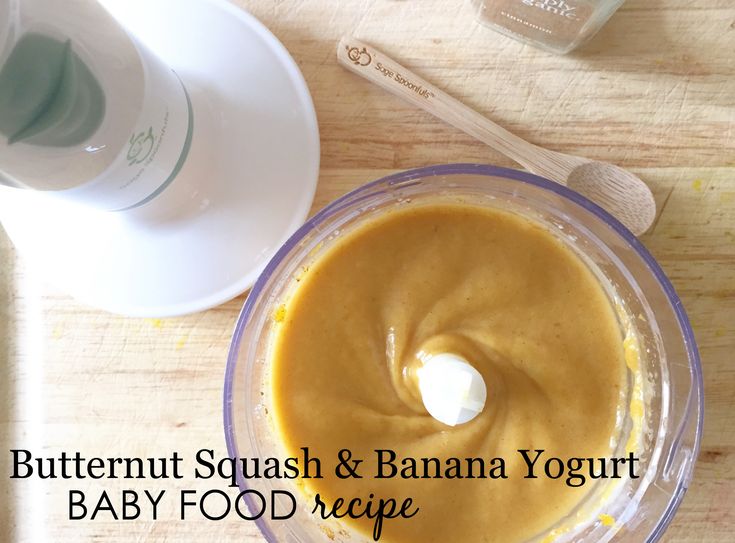 When the body can digest pilaf, namely by about 1-2 years, depending on how the family prepares this dish, then it is given from the common table.
When the body can digest pilaf, namely by about 1-2 years, depending on how the family prepares this dish, then it is given from the common table.
Until what age do we prepare children's recipes?
Until about 5-7 years of age, the child's diet is expanded, i. the child gets acquainted with various products up to about 7 years. For example, mushrooms can be given after 5 years, etc. Therefore, children's recipes are prepared up to 5-7 years. But in practice, children from the age of 2 eat from the general table, taking into account their familiarity with the products. Parents try to adjust their diet in such a way that it matches a healthy diet, which means that children are allowed to eat. Recipes for children are adapted by many parents for themselves, someone begins to eat more properly , someone reviews family meals, makes changes to them, someone cooks separately for a child, separately for adults, this is everyone's choice, no matter what recipes are used to prepare food for a child. The main thing is that food is beneficial and healthy for the child's body .
The main thing is that food is beneficial and healthy for the child's body .
Children's prescription contains
How does a children's prescription differ from an adult's?
Menu for the baby. Annabelle CarmelAdult dishes are distinguished by a large amount of fat and a cooking method - frying. Not very healthy food. Usually, before the birth of children, we eat haphazardly, do not think about a balanced diet or benefits for the body. But having a baby changes everything. Those who breastfeed early begin to understand the benefits of a healthy diet, as an extra chocolate can appear on the baby's pope in the form of red spots.
For those who have not breastfed, the benefits of healthy eating can be learned during weaning, or earlier when trying to shed the pounds gained during pregnancy. It does not matter how and when mothers understand that nutrition is the foundation of our full and healthy life , the main thing is that we are slowly introducing proper nutrition, following the principles of healthy food and teaching our children not to depend on junk food, we teach to feel our body and intuitively eat.
(4) 6-7 months - Encyclopedia Baby food
Stage 1 - (4) 6-7 months
Victoria Levchuk ©
It is recommended to introduce complementary foods at about 6 months of age, until this period the baby eats either mother's milk or formula. The introduction of the first complementary foods can be started earlier than 6 months, but only for medical reasons, a pediatrician's consultation is required. The introduction of solid food earlier than four months of age is strictly not recommended. To date, the timing of the introduction of complementary foods for infants, both on mother's milk and on an artificially adapted mixture, has been equated.
The most important stage, the main purpose of which is to introduce the child to solid food and teach him how to use a spoon. During this period, the mother offers the baby small portions of complementary foods, starting with the minimum dosages and gradually increasing the number of servings to the required minimum. It is important to understand and be patient with the first experiments with nutrition. Perhaps the baby will not always swallow food, often smearing it on his chin, so that his hands, mom and everything around will be dirty, because he needs time to learn how to take food from a spoon, move it into his mouth, chew and swallow.
It is important to understand and be patient with the first experiments with nutrition. Perhaps the baby will not always swallow food, often smearing it on his chin, so that his hands, mom and everything around will be dirty, because he needs time to learn how to take food from a spoon, move it into his mouth, chew and swallow.
First stage baby food (4) 6-7 months is a term referring to baby food where foods are well and thoroughly mashed and strained. These foods are great for babies who are just getting introduced to adult foods. The products of this period are aimed at babies who are aged from (4) 6-7 to 8 months.
In the first stage of baby food, liquid and pureed foods with the lowest allergy index are easier to digest for tiny tummies. Foods such as zucchini, cauliflower, pumpkin, etc. are usually introduced. In stores, you need to pay attention to the labeling of ready-made baby food, which usually indicates the age of the child from which this product can be consumed. Today, most parents are ready to skip the first important stage of baby food.
Today, most parents are ready to skip the first important stage of baby food.
Mom's milk during this period is also the main source of nutrition, and for "artists" - milk formula. Moreover, the feeding of the child does not change, he is also breastfed on demand, and with milk formula in the same quantities and at the same time as before. There is no need to introduce any additional fluids.
Complementary foods at this stage are one-component products, soft medium consistency, without salt, sugar and spices. The choice in favor of purchased canned purees or home-made products is up to the baby's parents.
At this stage, it is best to introduce the baby to vegetable purees or cereals. The decision with which product to start is made by the parents together with the baby's pediatrician. With normal weight, vegetable purees are introduced, and with a lack of weight - cereals.
If porridge was introduced first, then the next complementary foods are vegetable purees and vice versa.